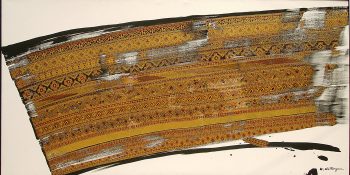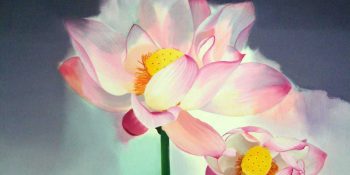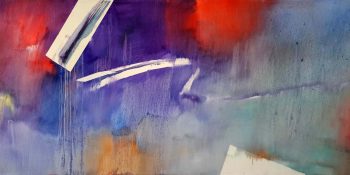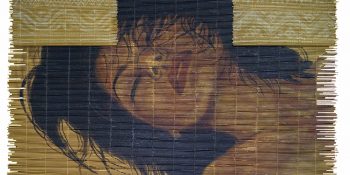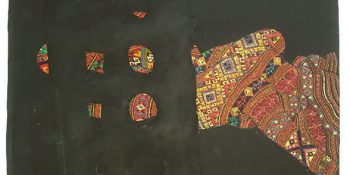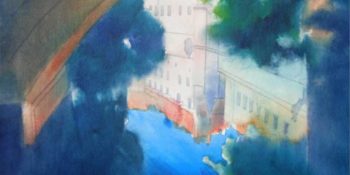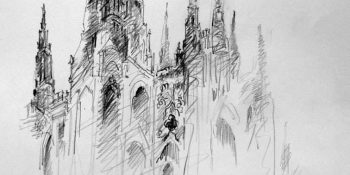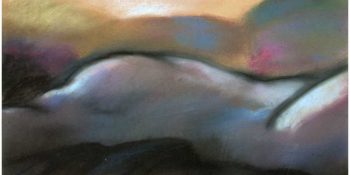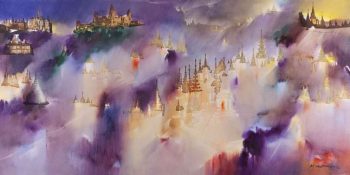Statement about Textile Series
Textile as Cultural and Social Text
In the old days nearly every house in Thai villages had weaving looms on the ground under the house. People wove cloth for family use, occasionally selling some to neighbors and to other districts. Every district has its own designs, materials, colors and techniques, its unique characteristics. There are wide varieties of materials, cotton, silk and synthetics and significant variation in quality and price. Lower priced fabrics are for daily wear around the house and street. The very high priced textiles are for the rich and people of high rank for formal or ceremonial occasions.
The Thai government has valued textiles as commodities and has incorporated them into their global marketing strategies, using textiles as part of country’s promotion of the tourist industry. Thai textile is used not only for costumes but also made into curtains, furniture, picture frames, scarves and bags, to name a few. Until now Thai textiles and its products have become well known and brought in good income for the country. Another outcome of this commodity strategy is that the Thai textile industry has become very developed, evolved, and noted throughout the world.
However from a social perspective, the ethnic minority women – the very people who create the textiles – tend to be the most powerless and voiceless in society. Many people in Southeast Asia see traditional textiles as something out of date, and most people in the areas where the textiles originate do not appreciate the value of their textiles. The textile clothing actually identifies them as “not assimilated” into modern society. They want to wear jeans and dress like “normal Thai people”.
My Work
My work combines painting and textile, featuring rich textures and colorful, intricate patterns, often portraying an image of a woman beneath the threads – the weaver woven into the textile itself.
“Grace and Malice”
This series of paintings, Grace and Malice, takes as its subject the inhumane treatment of the minority ethnic groups from the mountains of Southeast Asia. Though the people in these paintings represent cultures unfamiliar to many of us, the conflicts between the mountain people and the lowland societies are a metaphor for any conflict where the powerless and voiceless suffer violation and even extinction at the hands of those who would use and abuse them.
In these paintings, the grace of the mountain people is represented by their textiles and traditional dress. In many of the paintings, something has obviously happened to the people shown – something disturbing. They don’t seem to be in control of their lives. Indeed, the only visible remnant of their previous existence is the cloth they are wearing. Was some kind of malice, greed, or cultural blindness involved? How did it become so destructive? In many paintings there is also anticipation of what is just about to happen. As you look at each painting, consider what could happen?
Many of the paintings deal with opposites and the ironies that arise from them. For example, we usually think of physical beauty as something positive, but beauty is always vulnerable to danger, exploitation, and greed. Likewise, we also think of innocence as something positive, but it, too, is vulnerable to manipulation and betrayal.
The paintings also deal with the physical and cultural dislocation brought about by the power and policies that have driven the indigenous people from their homes and land. These desperate people must move from place to place looking for somewhere to live and to farm, and they are often pushed out as soon as they begin to settle in.
To look at the show sequentially, begin with the paintings that depict tiny figures coming down from the vast stretches of the mountains, while soldiers with their backs to us go up the mountain. Why are the hill people coming down, and why are the soldiers going up? What kind of march is this for the
villagers? Perhaps it is not that different from some of the infamous forced marches of history
What happens to people unwillingly forced to leave their homes and communities for unfamiliar places? Notice the woman lying on the rocky ground in one of the paintings. Is she resting? Look carefully. Might she be in pain? Could she be dead?
The lines in another painting suggest a woman’s form, wrapped in golden and black cloth. What is she doing, lying there like that? Does it have anything to do with some hill people’s tradition of covering their deceased in beautiful cloth?
Throughout the entire series, one thing shines through — the richness, intensity, and sheer beauty of their textiles – the only tangible continuity in their lives. Even in the smallest images of people coming down the mountains, you can see the patterns; in the most desperate situations, something of beauty remains – but for how long?
As an artist, I attempt to encourage reflection about our biases, and what we choose to see and not to see when there is conflict and when people are unkind to one another. The unkindness can be on any level – national, local, and personal. Though these paintings depict Southeast Asian ethnic groups, the questions they raise touch all of us: What is it that leads us into conflict and makes us behave as we do? Are we sometimes blind to the reality behind what we see? Do we ever choose not to see those things that would make us uncomfortable? What are the consequences of such choices? There are no easy answers, but increased awareness and honesty can only benefit us -– as individuals and as societies. Perhaps this is the most powerful lesson we can learn from the heartbreaking fate of the Southeast Asian hill people.
Wattana Wattanapun
Chiangmai,Thailand
